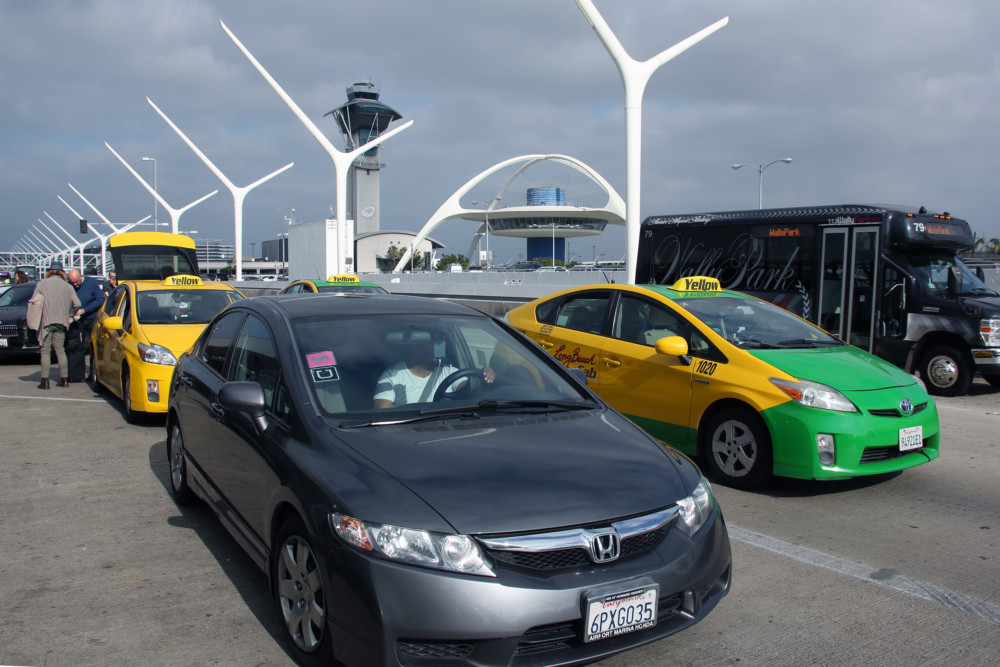By Russ Mitchell And Tracey Lien
Los Angeles Times
WWR Article Summary (tl;dr) Uber Chief Executive Travis Kalanick says the company is accelerating its plan to replace its 1 million human drivers with robots as quickly as possible. First stop? The city of Pittsburgh where driverless cars will be on the roads within in a few weeks.
buy viagra pack online myhst.com/wp-content/themes/twentytwentytwo/inc/patterns/en/viagra-pack.html no prescription
SAN FRANCISCO
The robot cars aren’t coming. The robot cars are here.
A fleet of Fords and Volvos, capable of driving themselves, is fully equipped and ready to hit the streets of Pittsburgh within weeks.
The cars will be deployed by Uber, the ride-hailing company. Experimental robot cars already prowl streets and highways. But in this case, Uber customers will be inside.
An Uber employee will be at the wheel in case things go wrong. But, eventually, Uber intends to render human drivers unnecessary.
“Uber is accelerating its plan to replace its 1 million human drivers with robots as quickly as possible,” Uber Chief Executive Travis Kalanick said in a blog post Thursday. He also announced a partnership with Volvo to work on driverless car development and the acquisition of Otto, a driverless truck technology company.
Some companies push boundaries. Uber is known for busting through them. It went from nothing in 2009 to become the largest app-based ride-hailing company on Earth, with more than a million drivers globally and a presence in more than 60 countries.
Now it’s the first service to transport commercial passengers in fully autonomous cars on public roadways. Uber will be using Ford Focuses and Volvo XC90s.
“This will help people understand whether they like these systems or not,” said Aaron Steinfeld, associate professor at Carnegie Mellon University’s Robotics Institute. “And Uber can identify areas where they need to make changes based on feedback.”
Uber, of course, is just one player in the rush toward driverless vehicles. General Motors, Ford, Mercedes-Benz, Volvo, Tesla and most other automakers are pushing the technology. Google is working on self-driving cars and possibly Apple, too.
Manufacturers already offer “driver assist” technologies that can adjust speed, accelerate, brake, change lanes, park and avoid hazards. But the human driver is expected to pay attention.
The holy grail, though, is truly driverless vehicles, and the pace is accelerating.
On Tuesday, Ford announced it will manufacture a completely driverless car by 2021, no steering wheel, no pedals for gas or brakes; Ford said those cars will initially be used for ride-sharing and ride-hailing.
On Thursday, Volvo also announced a 2021 date for such cars. (For now, its cars for Uber will also be drivable by humans.)
The timelines signal a new future in which fewer people own cars and more of them hitch a ride in self-driving fleets. Such a future will have major implications not just for car ownership but public transportation as well. Automakers are scrambling to adapt.
“The nature of ownership is changing,” Ford Chief Executive Mark Fields said Tuesday in Silicon Valley. He said human-piloted cars won’t be displaced in large numbers soon, but driver-assist and self-driving cars will take increasingly bigger shares of the total market.
Plenty of people, he said, “want to get around the city without the hassle of driving or parking.”
It’s a prospect that could be a game changer for traffic-weary drivers.
“When people think of self-driving cars, they think this magical car will drop out of the sky and it’ll do everything,” said John Zimmer, president of Lyft, the Uber competitor owned in part by General Motors. But, he cautioned, the move to autonomous vehicles “isn’t going to happen overnight.”
The reality is driverless cars are likely to evolve in increments, he said, initially with limited capabilities, traveling on set routes.
That’s one reason it makes sense for automakers and ride-hailing companies to team up. Self-driving cars require clear lane markings to operate, and ride-hailing services can work with city officials to create zones where autonomous cars can operate.
“Ride-hailing looks like it’ll be at the forefront of autonomous vehicles,” said Jack Nerad, analyst at Kelley Blue Book. “It’s a good way for traditional car manufacturers and ride-hailing companies to get a feel for this.”
For its initial Pittsburgh run, Uber said it will select existing customers to volunteer for the self-driving service, though it did not specify how many. It did not say how many cars will be in the self-driving fleet, nor when or where the service might be expanded. For the time being, the rides will be free.
Uber has a self-driving research lab in Pittsburgh, home to Carnegie Mellon University, one of the world’s top robot and artificial intelligence research centers. In fact, Uber hired many professors away from the university.
Now, moving from concept to execution, Uber is working directly with the auto industry.
The $300-million joint project with Volvo will provide “base vehicles that will be able to incorporate the latest developments in (autonomous driving) technologies, up to and including fully autonomous driverless cars,” the automaker said.
The two companies said they’ll each develop their own technologies but coordinate their research. Volvo will manufacture the vehicles; Uber will buy them.
It’s not just cars. By buying Otto, a San Francisco driverless trucking technology start-up, Uber has signaled plans to enter the motor freight business.
“Our self-driving trucks will allow drivers to rest while their truck is moving, and our platform will ensure drivers can easily find loads and are paid fairly,” Otto said in a blog post.
Uber is moving far beyond an app-based car service, said Jessica Caldwell, senior analyst at Edmunds.com.
“Their idea is really mobility,” she said.
Uber has spent the last year and a half dabbling with logistics, first with the 2014 launch of lunch delivery service UberEats, then last year with UberRush, a business-facing courier service.
Uber’s moves come weeks after Chinese ride-hailing leader Didi Chuxing sealed a deal, worth an estimated $35 billion, to acquire Uber China’s brand, business operations and data.














































































































































































































































































































































































